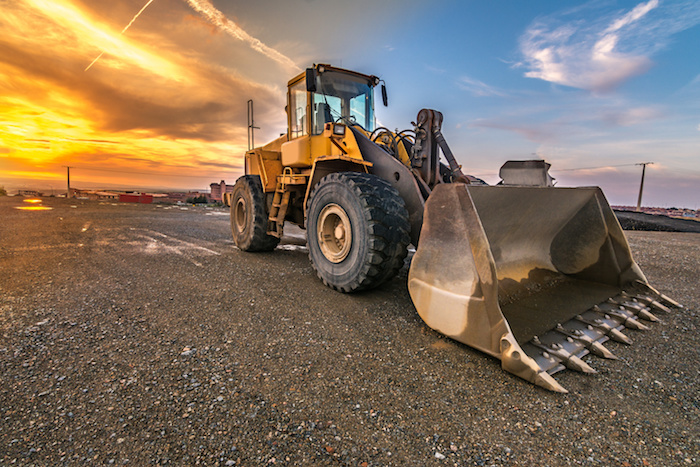Forklift Rental Services for Industrial and Commercial Use
Forklift Rental Services for Industrial and Commercial Use
Blog Article
Renting Vs. Purchasing Construction Equipment: Making the Right Option for Your Project
When starting a building and construction project, among the vital choices that forecast stakeholders and managers deal with is whether to lease or get construction equipment. Both alternatives have their benefits and downsides, making the selection a critical one in the task planning procedure. The choice depends upon different elements such as expense factors to consider, project duration, tools maintenance, scalability, flexibility, and danger administration. Each component plays an important duty in establishing the most appropriate course for the project's tools needs. equipment rental company. Let's check out these elements further to recognize exactly how they influence the decision-making process and inevitably the success of the job.
Cost Considerations
Leasing equipment commonly calls for reduced initial repayments compared to acquiring, making it an attractive choice for temporary projects or service providers with budget plan constraints. In the lengthy run, constantly renting out equipment can gather greater expenses than acquiring, specifically for extended jobs.
On the other hand, getting building devices entails greater upfront costs but can result in lasting savings, especially for lasting projects or constant users. Ultimately, the decision between leasing and purchasing building and construction tools pivots on the job's period, frequency of use, budget considerations, and long-lasting economic goals.
Job Period

On the other hand, for lasting jobs or ongoing building and construction job, buying equipment might be the much more economical option. Getting devices can result in set you back savings in the lengthy run, particularly if the tools will certainly be regularly used. Furthermore, having devices gives a feeling of control over its schedule and permits for personalization to fit specific project requirements.

Equipment Upkeep
Given the important role task duration plays in figuring out the most cost-efficient technique in between renting out and acquiring building and construction devices, the emphasis currently moves towards examining the vital aspect of equipment maintenance. Correct maintenance is important for ensuring the optimal efficiency and long life of building and construction equipment. Renting equipment typically comes with the benefit of having actually well-maintained machinery provided by the rental business. This can alleviate the burden of upkeep jobs from the project proprietor or specialist, conserving effort and time. On the various other hand, owning equipment requires an aggressive strategy to upkeep to stop failures, make certain safety and security, and prolong the tools's life-span. Regular inspections, maintenance, and timely repair services are essential to keep owned and operated equipment in leading working problem. Consider upkeep costs when choosing between buying and renting, as neglecting upkeep can result in expensive repairs, downtime, and project hold-ups. Ultimately, a well-maintained building devices fleet, whether leased or had, is crucial for the successful and see here now effective conclusion of building and construction projects.
Flexibility and Scalability
In the world of building tools monitoring, the element of versatility and scalability holds substantial significance for job efficiency and source utilization. Opting to rent construction devices supplies a high level of adaptability as it allows for the quick change of equipment kinds and quantities based on the evolving requirements of a task.
Furthermore, scalability, one more crucial aspect, is inherently connected to adaptability. Leasing building and construction tools provides the benefit of conveniently scaling operations up or down as task needs fluctuate. Professionals can promptly trade or add equipment to match the project's changing requirements without the constraints of having assets that may end up being underutilized or obsolete. This ability to range resources effectively can lead to price financial savings and boosted project timelines, making renting a positive option for jobs calling for adaptability and receptive resource allotment.
Risk Monitoring
Reliable threat administration in building and construction tools procedures is critical to making certain project success and mitigating prospective monetary losses. Building and construction tasks naturally entail different threats, such as tools breakdowns, crashes, and task delays, which can significantly impact the task timeline and spending plan. By very carefully considering the risks connected with owning or renting out building tools, project supervisors can make enlightened choices to decrease these possible threats.
Leasing construction equipment can provide a level of risk reduction by transferring the duty of upkeep and repairs to the rental firm. This can reduce the monetary concern on the project owner in case of unforeseen devices failures (scissor lift rental). Additionally, leasing offers the flexibility to accessibility browse around this site customized devices for certain job stages, decreasing the danger of having underutilized machinery
On the other hand, having building equipment supplies a sense of control over its usage and maintenance. However, this additionally means bearing the complete responsibility for repairs, maintenance costs, and depreciation, raising the economic threats connected with devices ownership. Mindful danger analysis and factor to consider of aspects such as task duration, equipment use, and maintenance demands are critical in establishing one of the most suitable choice for efficient risk administration in building tasks.
Final Thought
In verdict, when choosing between leasing and buying building and construction equipment, it is vital to think about expense, project duration, devices maintenance, flexibility, scalability, and threat management. Each element plays a critical role in identifying the most ideal choice for the job at hand. By very carefully reviewing these facets, job supervisors can make an informed decision that aligns with their spending plan, timeline, and overall project goals.

Report this page